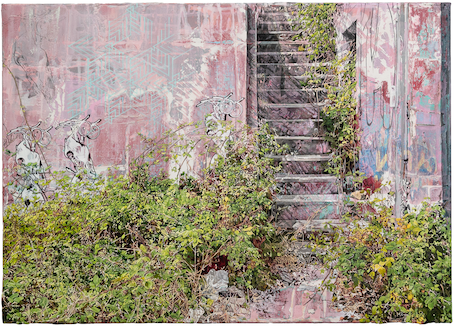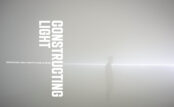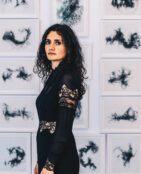Racial memory, tribal reflex, and the most deeply ingrained lore of our species bestows weighty emphasis on the concept of the wall. Jericho, Jerusalem, the Texas border, the back yard. Our simplest, yet most enduring achievement, the wall is that rare item which simultaneously inhabits the realm of metaphor, myth… and the mundane. Elections are won on the promise of building them; progress is measured on our ability to breach them; desirables are encompassed by them, the undesired repelled.
Painting—an activity that has long depended on being placed on the right walls in the right places—has rarely displayed the meta-consciousness required to truly acknowledge the ontological heft of the wall itself. At least, not the sort of painting you find in galleries. But where would street art be without its breezeblock canvas?
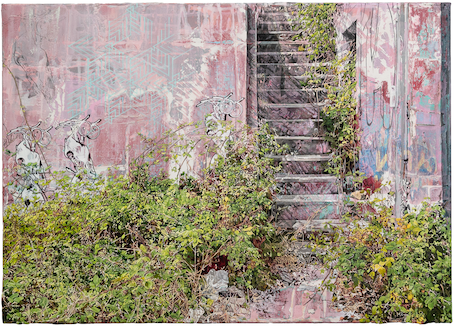
Miranda Donovan, though, gets it. Gets the meta, for want of a better phrase. Bringing the vibrancy and wit of street art onto canvas and into galleries, Donovan leapfrogs the worthy-but-clunky futility of installing a Basquiat or Haring tableau on a gallery wall by creating her own deeply engaging visual context. Pictures within pictures, the crumbling torpor of her sun-drenched settings evokes a comforting Year in Provence lassitude, but it is a clever foil for the street art characters and aphorisms which peep out with another layer of interpretation. Urban, rural, beauty, decay, langour, energy…Donovan includes it all, wrapped in the most versatile of inclusion/exclusion metaphors—the wall itself.
Miranda Donovan’s collection ‘Genesis’ is on show at Woolff Gallery from 22nd May to 12th June, 2024.
Extract from ‘Genesis’ Exhibition Notes
‘The genesis of every painting I make is a wall.’ Miranda Donovan
Miranda Donovan paints walls. Fragments of the city, formed of fading layers, textures and colours which speak of histories collapsed onto a surface. They frame the road less travelled, walls once bright with paint now perhaps overlooked on our way out of town. Every piece is rendered in exquisite photorealistic detail, forged in her Willesden Junction studio where she has developed a unique process of building up acrylic and oil over building materials mixed with poIymers. Such a style of painting combines techniques of the construction trade with notes of both Surrealism and Street Art to beautifully evoke her urban landscapes, and landed her instant success after graduating from City and Guilds in 2005. Nick Woolff was one of the first to recognise her to be ‘pulling away at the sides’ of what contemporary painting was then all about. Within a year, she was picked up by Banksy’s former agent Lazarides Gallery, and has featured in several prominent art galleries, major auction houses and exhibitions ever since. As a formidable contemporary painter, she challenges the notion that opposites are unrelated, bridging together notions of public and private, urban and rural, order and chaos, beauty and decay.
Donovan’s works are no stranger to the established rostra of art world names, exhibiting with Christie’s, Frieze and Sotheby’s New York, where she was featured as a Highlight of Contemporary Street Art in 2021. With such an impressive list of public and private collections under her belt (Soho House, House of Koko, Groucho Club, Frank Cohen, the Mugrabis, Mark Hix, Stephen Webster and the Khalili brothers to name a few), and an equally enviable list of co-exhibitors (Ai Wei Wei, David Hockney, Anthony Gormley, Grayson Perry, Maggie Hambling and Julian Opie), she returns to Woolff Gallery this May with a collection of works never-before exhibited.
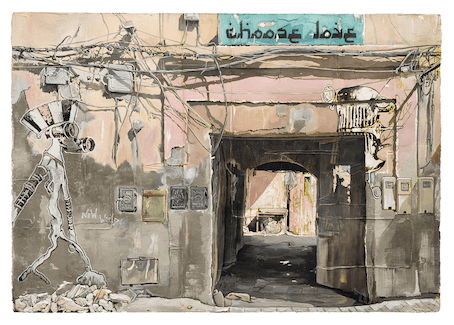
Marked by an evolution and aesthetic shift from her works which came before, ‘Genesis’ builds on Donovan’s signature wall pieces. Lurking in the very fabric of her constructed paintings are surreal-like figures: mechanical characters accompanied by hidden messages which seem to emerge from her subconscious to call on the constructions we create in ourselves. Although they belong very much to her world, they equally represent archetypal roles we may all relate to: the rebel, the dancer, the judge, the fawn – each one distinct to their environment.
Plastered to the walls, depicted strolling, jumping, or even just observing, these black and white figures made their way into Donovan’s work in 2017, and together, they form a family of characters who herald uplifting slogans such as ‘Choose Love’ or ‘Take Your Own Time,’ ‘Stay in Trust’ or ‘Time to Break Free’ which Donovan cites arose out of her experience of IFS therapy. The text too, is deliberately ambiguous: “I want them to be latent reminders of the things we say to ourselves,” she says, blending them into her walls as if they were popular posters for a past event, refusing to be wiped off.
Seeing these works in the flesh, it’s hard not to ask why we haven’t always associated beauty with decay, or the urban with the rural, and why indeed we relate to one particular piece over another. Through Donovan, we get a glimpse of the genesis of contrasts which we live in, both as people with multiple internal lives, and as a wider population in London’s ever-growing patchwork of new and neglected builds. It is no wonder she also cites Anselm Kiefer and Sean Scully as inspirations, for these too are highly-structured collages of paint, rooted though they are in a cool, calm otherworldliness.

An observer first and foremost, Sean Keenan takes what he sees and forges words from the pictures. Media, critique, exuberant analysis and occasional remorse.

